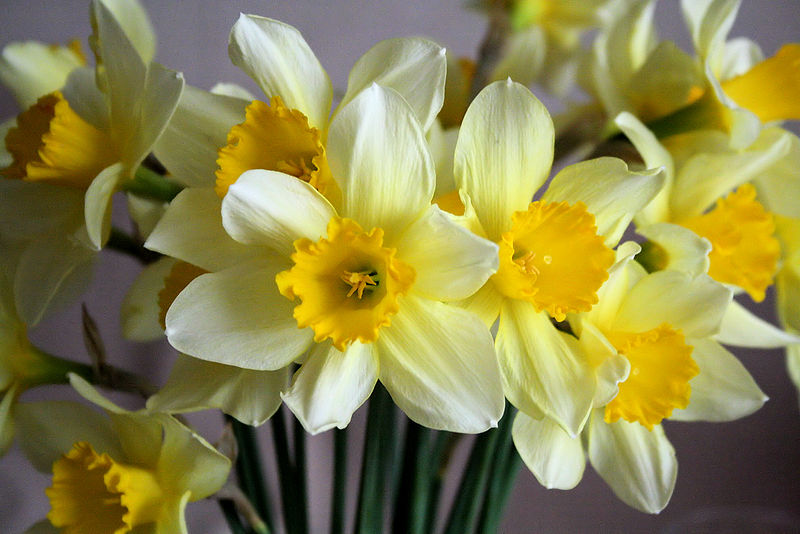Daffodils
Pretty little, delicate yellow and white Daffodils. Fun fact, while Daffodil is the common and generally accepted name, their actual genus name is Narcissus, after the Greek God by the same name. Mythology explains that Narcissus was so in love with himself that he sat by a lake starring at his own reflection in the water; he was drawn closer and closer until finally he fell in, and drowned. It’s said that the first Daffodils sprung from that very spot.

Some varieties of Daffodils such as Tete-a-Tete, which are best when planted in partial sun during the fall, are one of the first spring flowers to bloom. It’s actually recommended you plant Daffodil bulbs about 4 weeks before the ground freezes. This gives them time to develop roots and prepare for winter and allows them to be one of the first flowers to bud in the spring.
Iris
The Iris also gets its name from Greece as the word Iris is Greek for rainbow. The Iris was aptly named as it comes in a variety of colors, you could even say they come in a rainbow of colors, including each letter of ROY G BIV. The most popular colors though would be BIV: blue, indigo and violet. Of all Irises, the early spring bloomers are the purple and blue flowered Reticulata Iris which bloom in March and early April. Other more common types of Iris including the Bulbous Irises bloom more towards mid-spring early summer.

Scilla (Hyacinth)
Scillia, which is in the Hyacinth family, is another great flower that gardeners love not only because it is an early spring bloomer, but also because of its gorgeous blue and purple hues; though it can also be found in pink and white. Like most all flowers in the Hyacinth family, Scillia are extremely fragrant and their pleasant scent can easily permeate an entire garden. Because they are among the first to bloom in early spring, the leaves will began to wither and die and the plant will become dormant by early to mid summer.

No comments:
Post a Comment